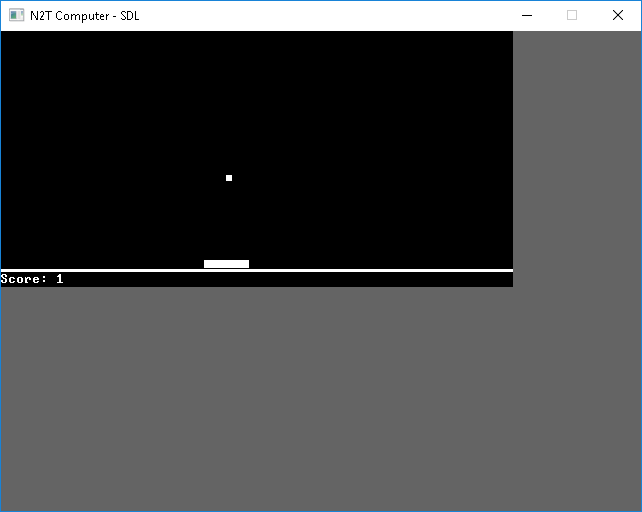
Rather than throwing a bunch of the documentation into the code, I'll try putting it here.
From our previous example when simulating the ALU, we can remove the SDL_Text library, the Nand2Tetris computer has it's own font and text rendering function. We'll need to include a few more headers for the individual components we'll be inspecting in the simulation (computer, rom, and memory).
#ifdef _WIN32
#include <SDL2/SDL.h>
#else
#include <SDL.h>
#endif
#include <cstdint>
#include <fstream>
#include <bitset>
#include <verilated.h>
#include "Vmy_computer.h"
#include "Vmy_computer_my_computer.h"
#include "Vmy_computer_my_rom.h"
#include "Vmy_computer_my_memory.h"
using namespace std;
Next is our renderer and simulated module global pointers along with our step function that will change the CPU clock on and off while updating the module simulation at each change.
SDL_Renderer *renderer;
Vmy_computer *top;
void step()
{
top->clk = 1;
top->eval();
top->clk = 0;
top->eval();
}
handleInput will be updated a little bit to allow capturing of the keyboard key presses. There's just a 16bit register in the model that we'll be updating based on the keyboard ASCII code. The only exception at this point is the Left and Right arrow keys. There's actually a couple other changes in the full computer but I'll just use these for now to allow the Pong paddle movement in the simulation (and keep the code fairly minimal). The keyboard register is cleared when the key is released.
int handleInput()
{
SDL_Event event;
while (SDL_PollEvent(&event)) {
switch (event.type) {
case SDL_QUIT:
return -1;
case SDL_KEYDOWN:
if (event.key.keysym.sym == SDLK_ESCAPE)
return -2;
if (event.key.keysym.sym == SDLK_LEFT)
top->my_computer->MEMORY->__PVT__keyboard__DOT__bits = 130;
else if (event.key.keysym.sym == SDLK_RIGHT)
top->my_computer->MEMORY->__PVT__keyboard__DOT__bits = 132;
else
top->my_computer->MEMORY->__PVT__keyboard__DOT__bits = event.key.keysym.sym;
break;
case SDL_KEYUP:
top->my_computer->MEMORY->__PVT__keyboard__DOT__bits = 0;
break;
}
}
return 0;
}
initVideo is just updated with the new Window title (included here for completeness).
void initVideo()
{
SDL_Init(SDL_INIT_VIDEO);
SDL_Window *window = SDL_CreateWindow("N2T Computer - SDL", SDL_WINDOWPOS_UNDEFINED, SDL_WINDOWPOS_UNDEFINED, 640, 480, 0);
renderer = SDL_CreateRenderer(window, -1, 0);
}
drawScreen is where most of our changes are placed. This is a relatively simple way to take the individual bits from the video ram in the simulated model and just throw those onto our display surface. We could do this more efficiently by converting the block of memory in bit format to our surface format, but this actually runs pretty quickly for our simulation purposes (most of the time is spent in the CPU cycle rather than display).
Notes on the display we're simulating: It's a two color (single bit per pixel) 512x256 display. The memory is a collection of 16bit memory values (hence our use of uint16_t for storing the value as an unsigned 16bit integer). It's all contiguous so we don't have to handle skipping locations or handling memory pages, and just have simple bit operations to grab the bit values.
void drawScreen()
{
uint16_t *smem = top->my_computer->MEMORY->__PVT__screen__DOT__memory;
for (int y = 0; y < 256; y++) {
uint16_t *row = &smem[y << 5];
int x = 0;
for (int i = 0; i < 32; i++) {
int xib = 1;
for (int xi = 0; xi < 16; xi++) {
if (row[x >> 4] & xib)
SDL_SetRenderDrawColor(renderer, 255, 255, 255, 255);
else
SDL_SetRenderDrawColor(renderer, 0, 0, 0, 255);
SDL_RenderDrawPoint(renderer, x, y);
x++;
xib = xib << 1;
}
}
}
}
We'll use a gray for the background since our pixels are just black and white.
void draw()
{
SDL_SetRenderDrawColor(renderer, 100, 100, 100, 255);
SDL_RenderClear(renderer);
drawScreen();
SDL_RenderPresent(renderer);
}
Here's the other change major...
Read more »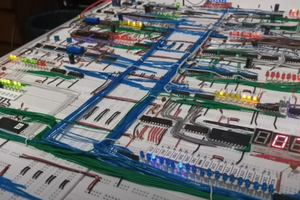
 Fábio Gil
Fábio Gil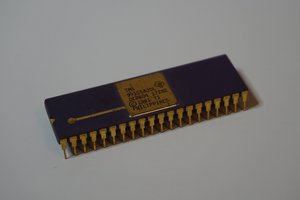
 Erik Piehl
Erik Piehl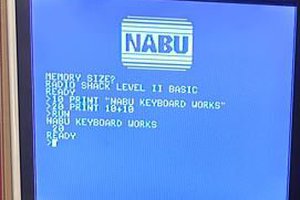
 Ted Fried
Ted Fried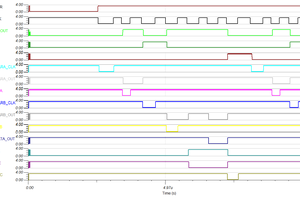
 agp.cooper
agp.cooper
nice